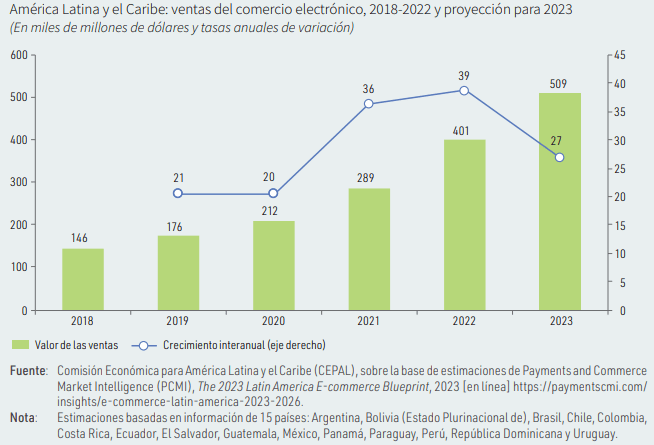Online shopping behaviors are evolving as e-commerce adoption grows around the world.
According to BigCommerce Holdings, this puts enormous pressure on companies to pursue digital transformation with technology that innovates as fast as the market.
Consumers are rapidly changing the way they shop through online and offline channels.

So companies must address the variety of touch points that influence what and where shoppers buy, including content sites (information and influencers), social networks, search engines, marketplaces and, of course, their own brand sites.
Now, according to ECLAC, it is estimated that in Latin America and the Caribbean e-commerce sales in 2022 would have been US$401 billion, which means a growth of 39% compared to 2021 and 128% compared to 2019.
These figures place the region below Asia, the world’s largest e-commerce market, the United States and Europe, and above Africa.
By 2023, the region is expected to be the fastest growing globally, with sales almost 30% higher than those recorded in 2022.
Within the region, the main markets in terms of sales value are Brazil and then Mexico, which together account for between 50 and 60% of the regional market, followed by Argentina, Chile, Colombia, Ecuador and Peru.
E-commerce
ECLAC refers that the most important category within total sales is retail e-commerce of goods, which concentrated between 160,000 and 210,000 million dollars in 2022 and is estimated to grow 30% in 2023.
Behind this category are mainly online platforms that integrate payment, logistics and, in some cases, credit solutions, and represent the main gateway for new online shoppers.
In addition, it is estimated that in 2022 cross-border sales accounted for only 14% of total online sales in the region, albeit with significant differences between countries.
The emergence of new methods for making cross-border electronic payments through solutions such as Pix in Brazil, Pagos Seguros en Línea (PSE) in Colombia or Costa Rica‘s Sistema Nacional de Pagos Electrónicos (SINPE) is also an enabling factor for a higher volume of cross-border e-commerce.

